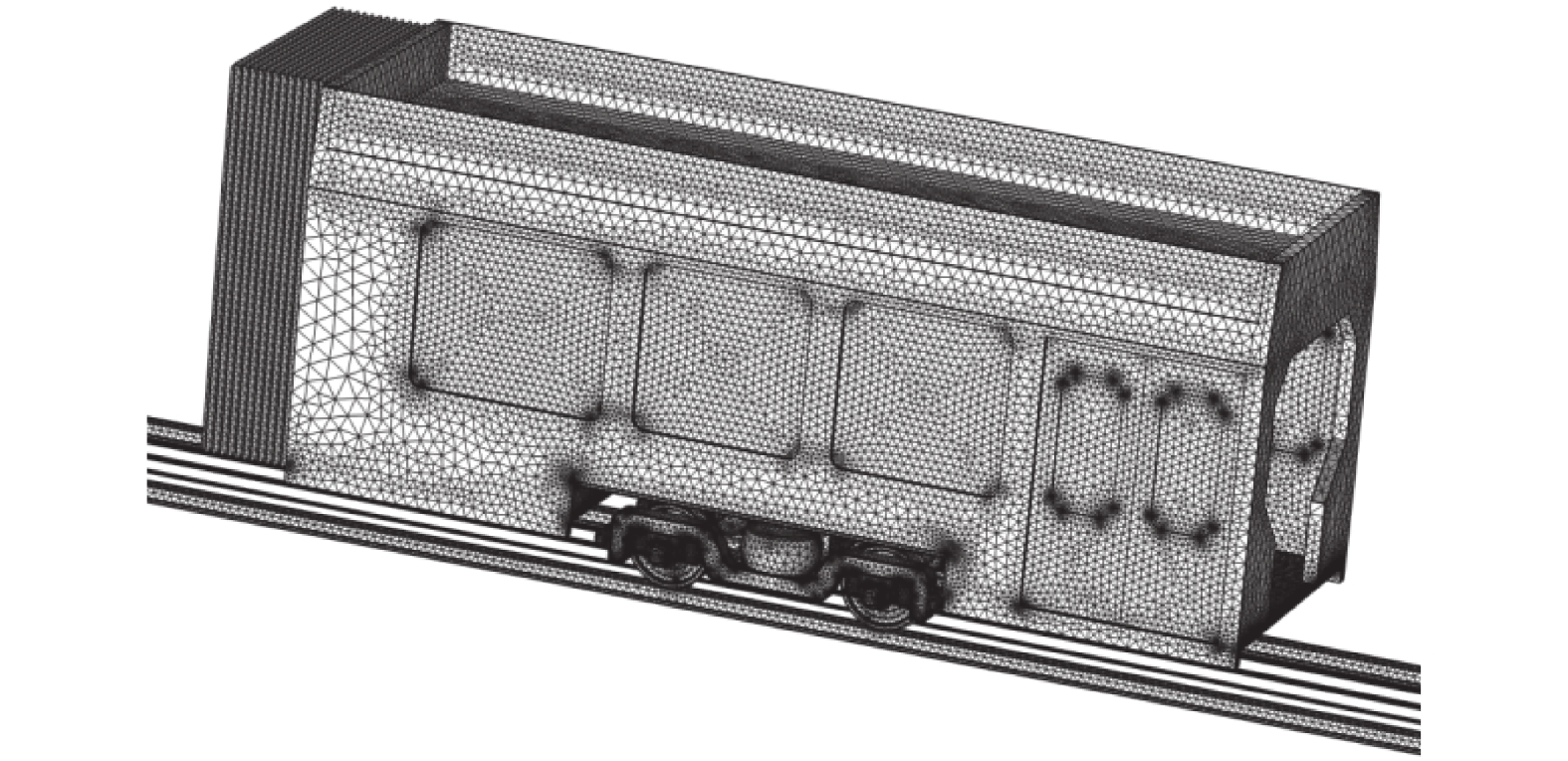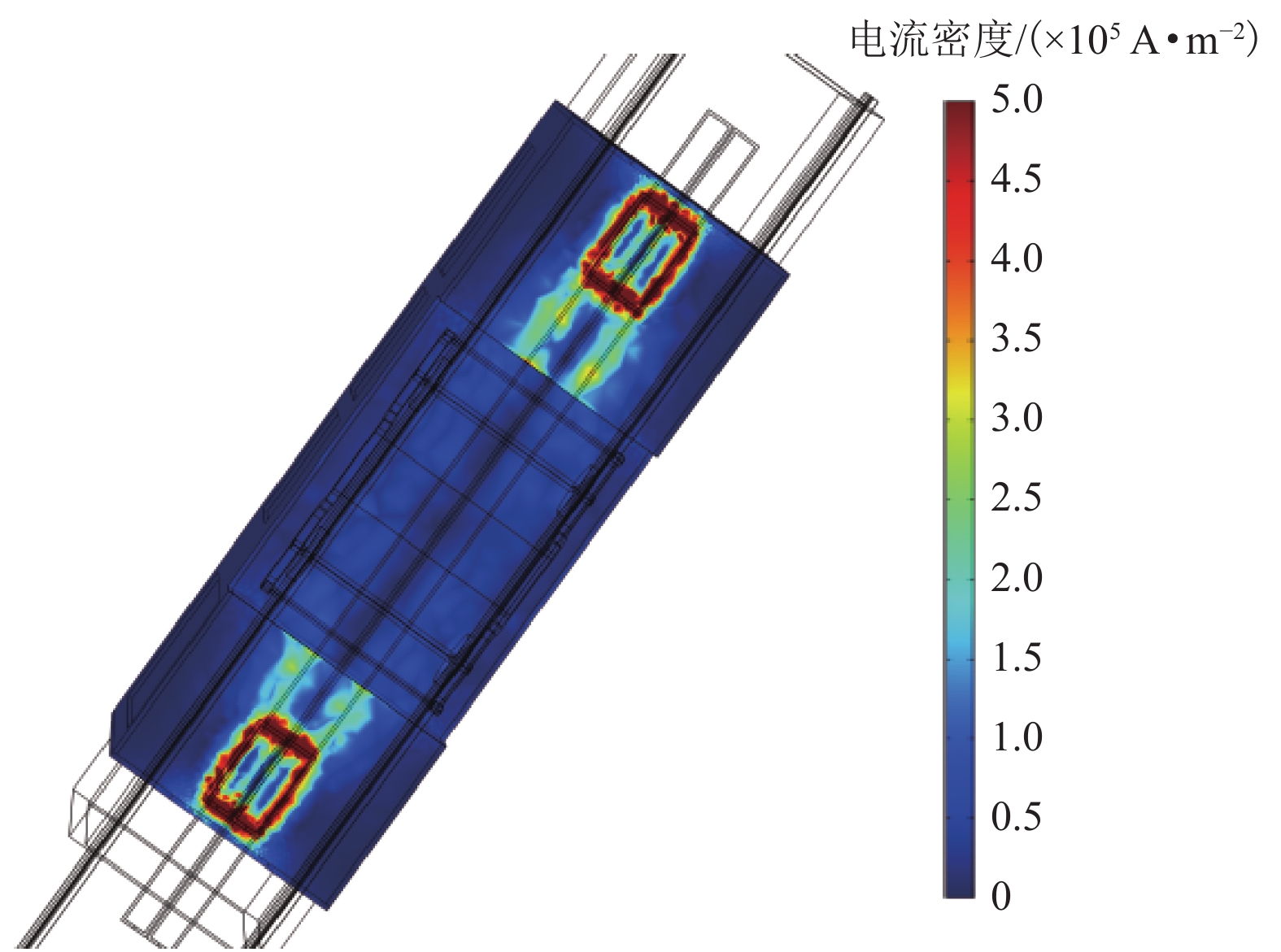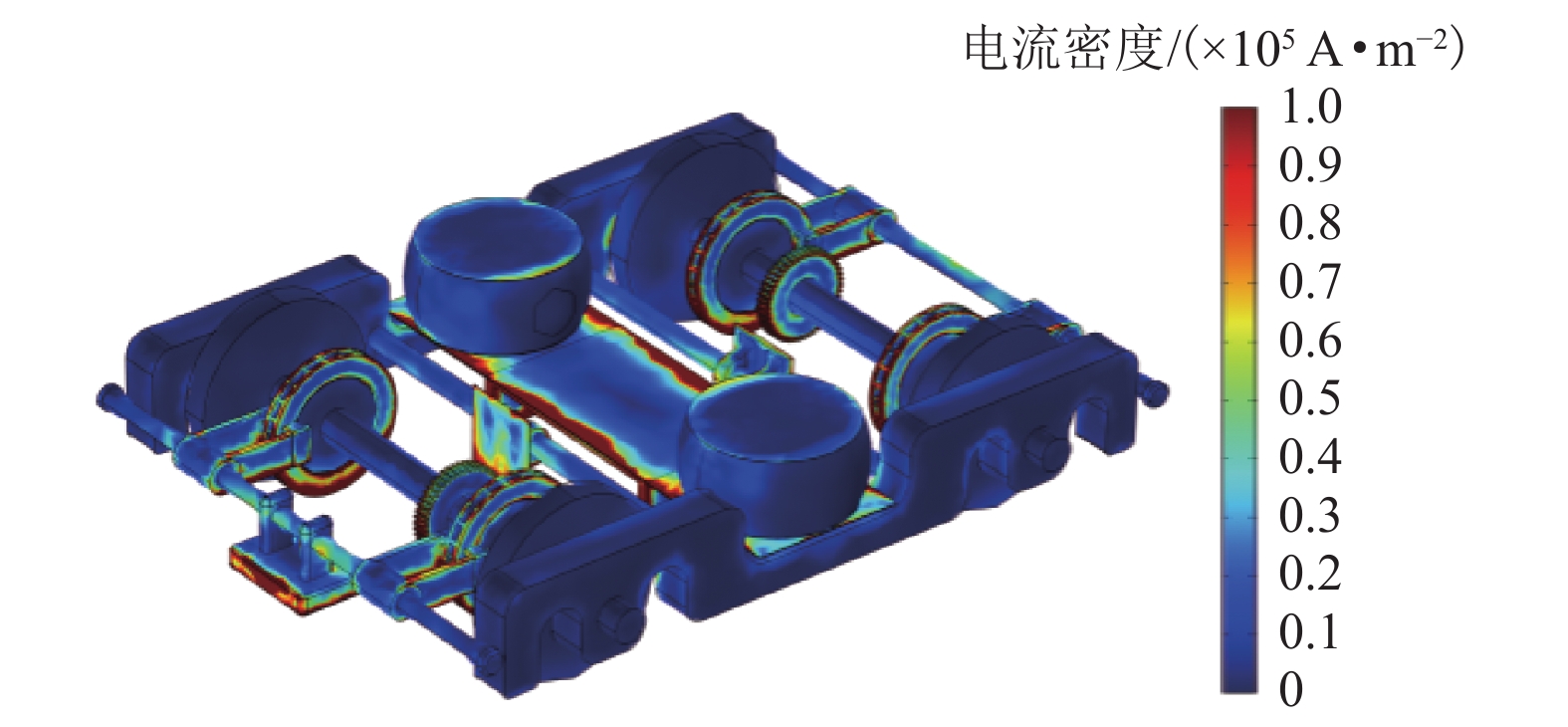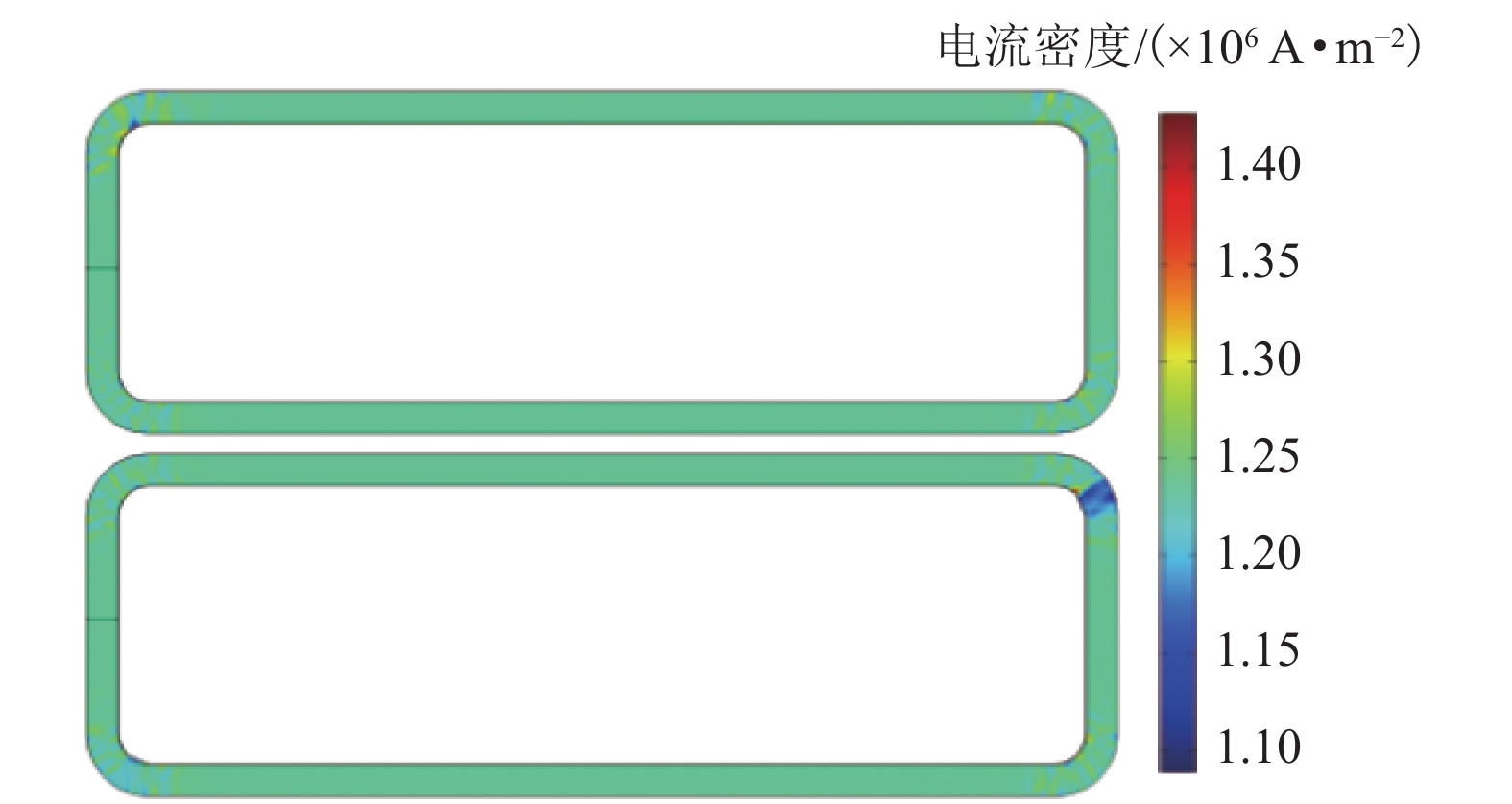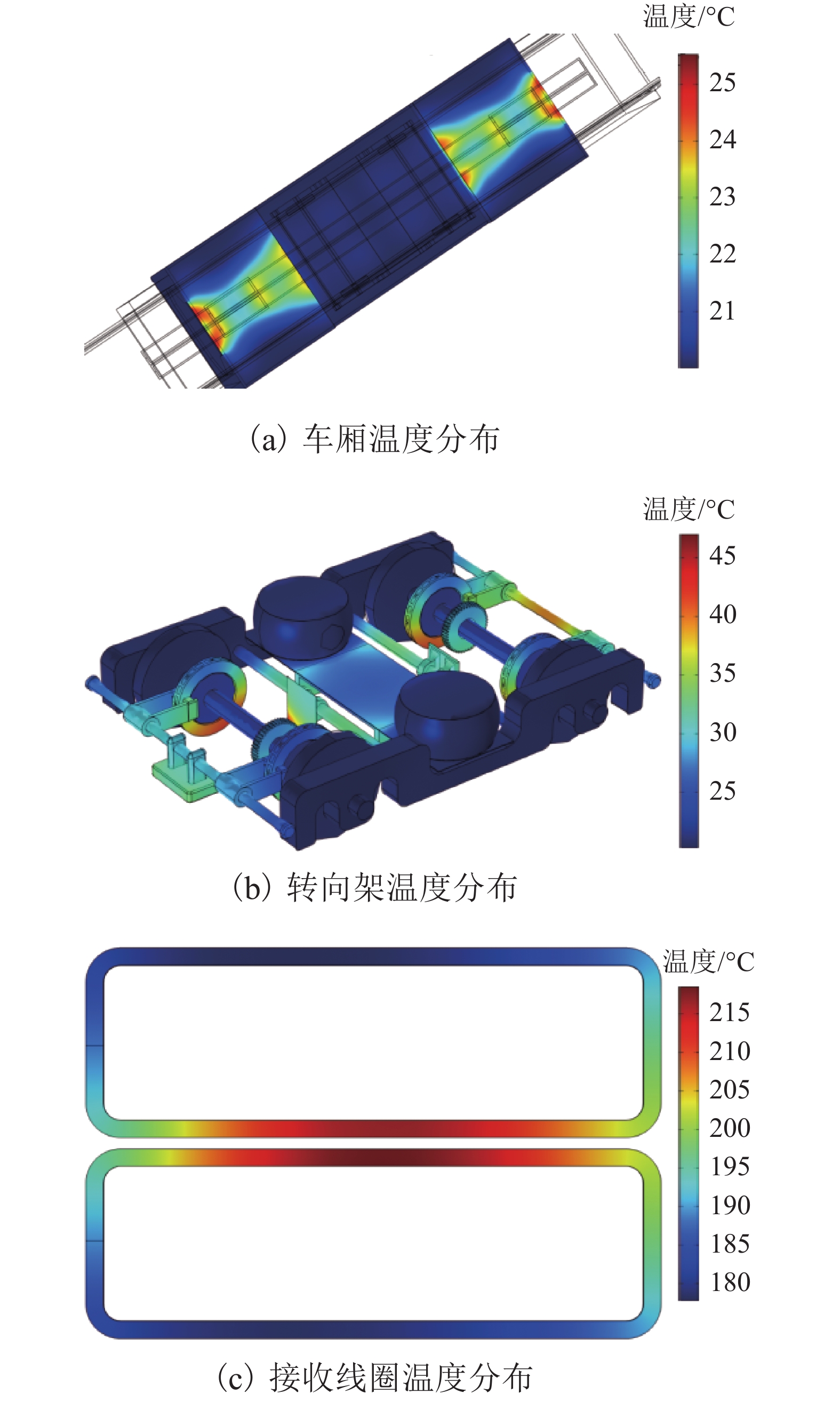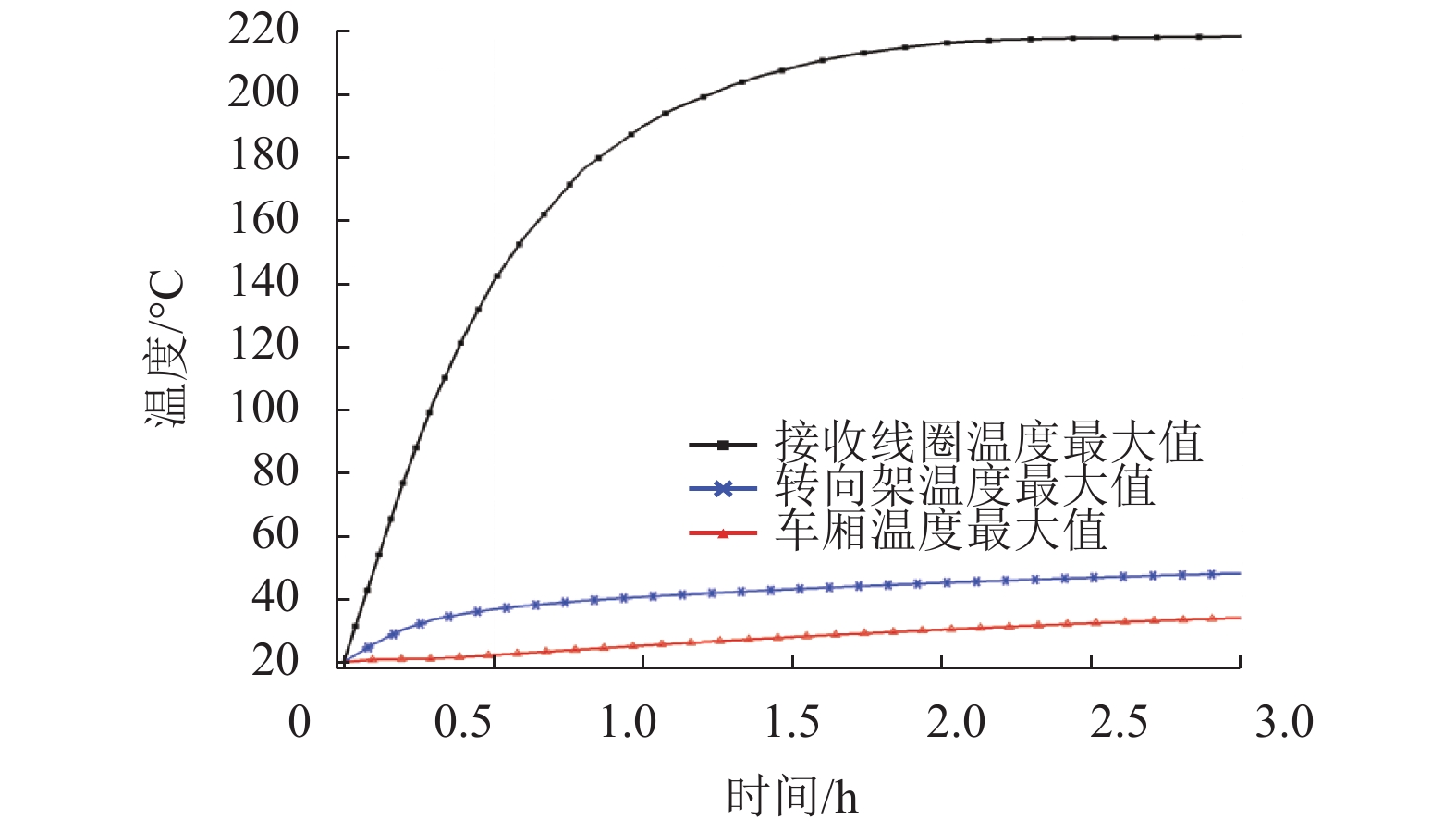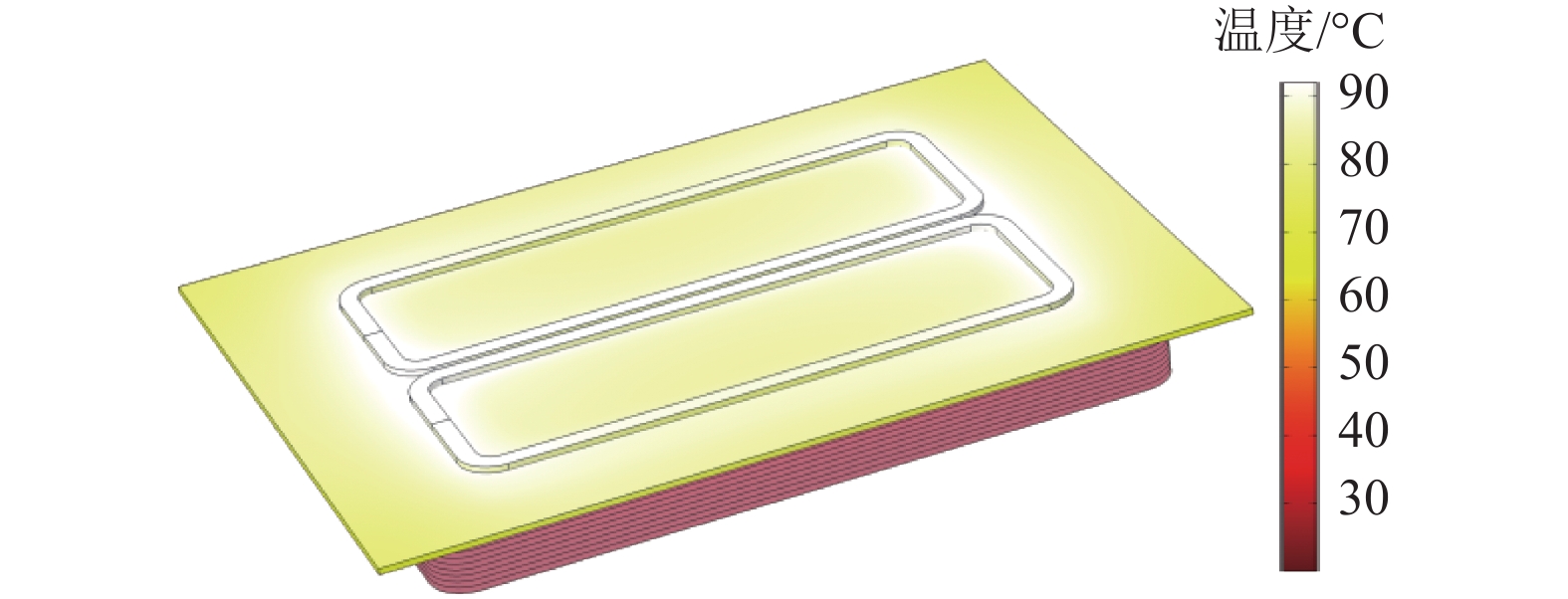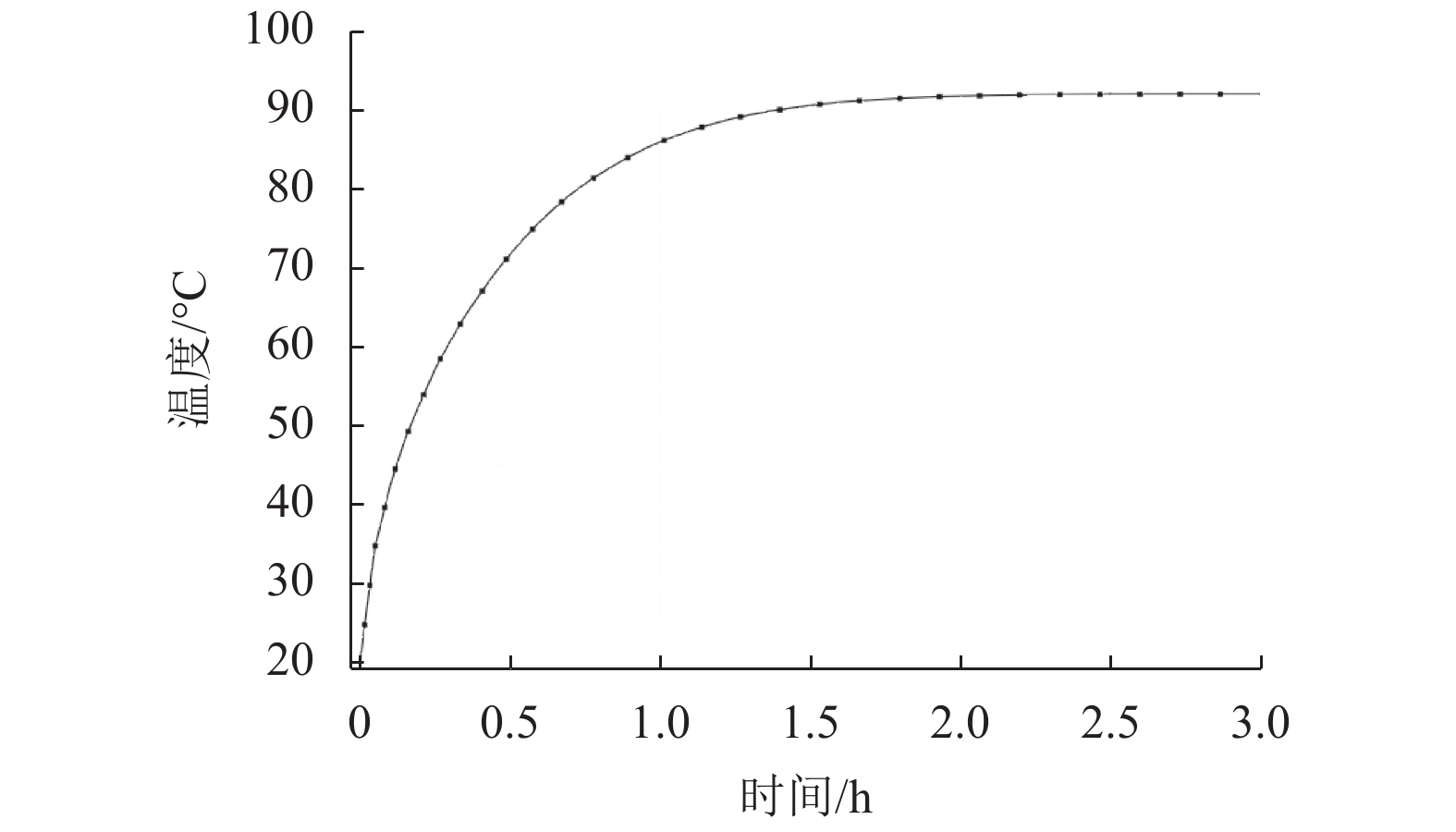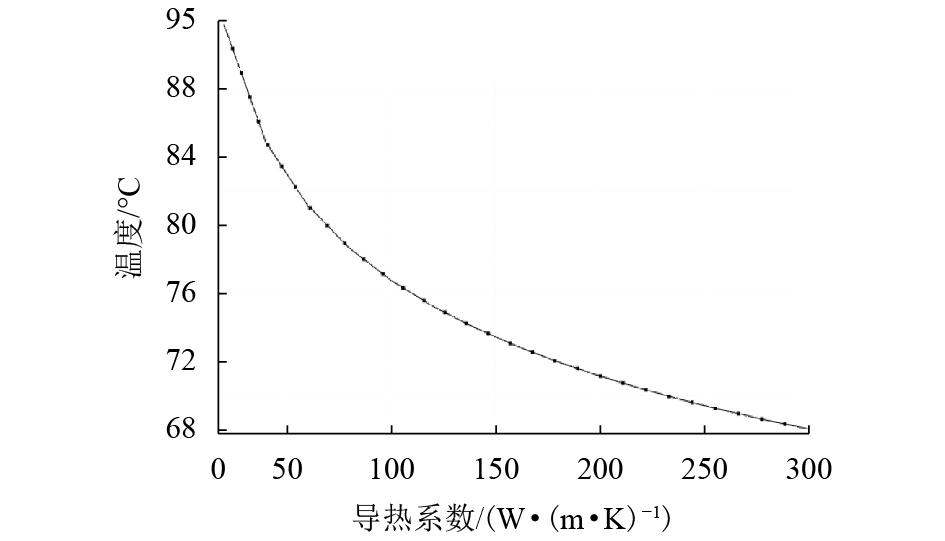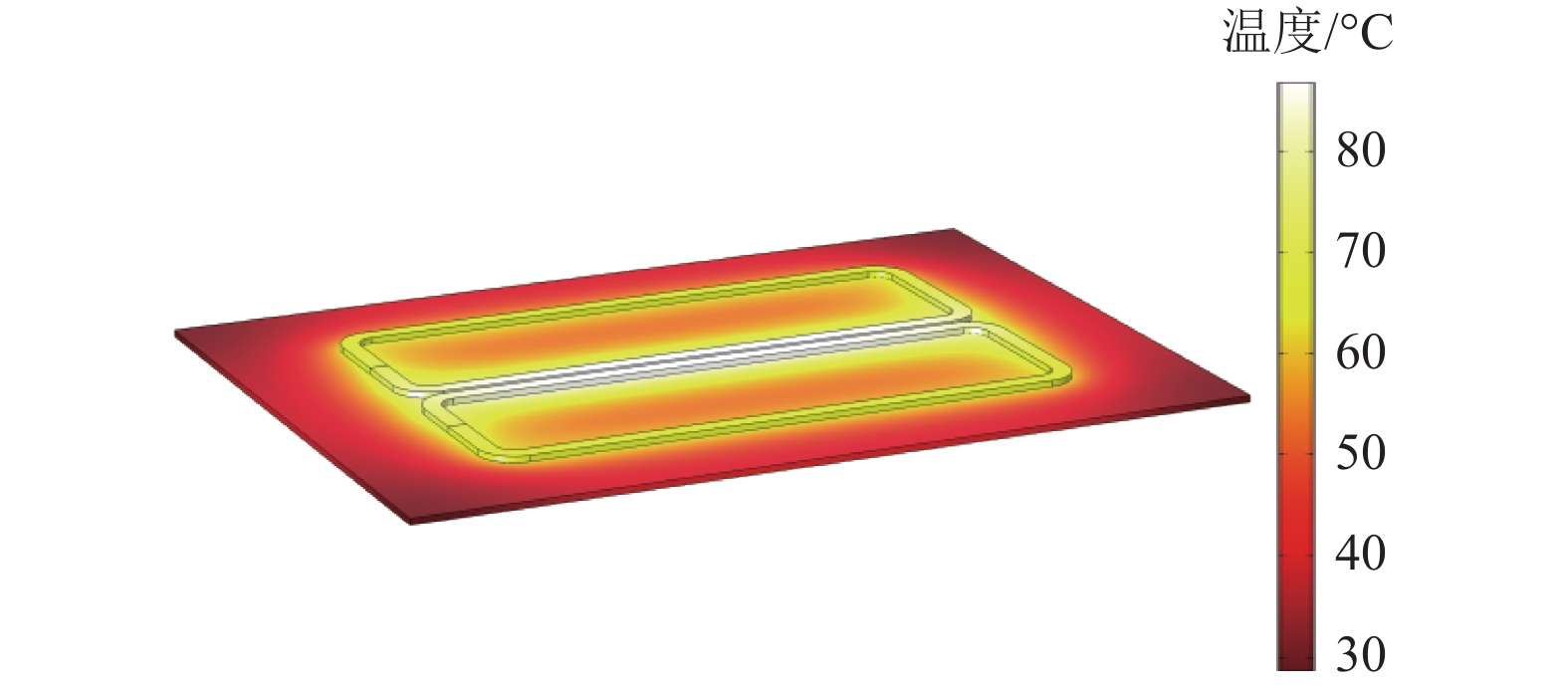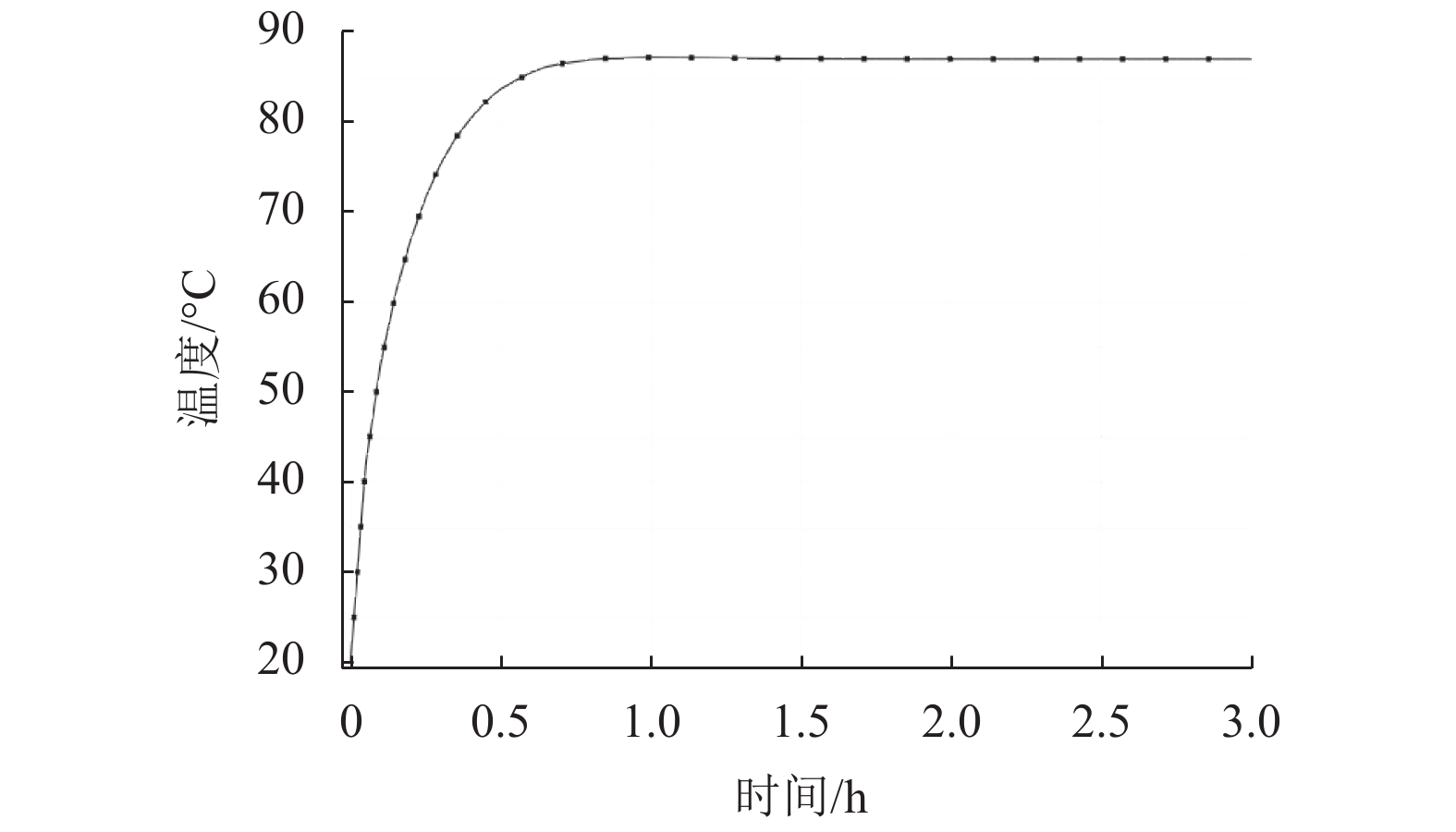Electromagnetic-Thermal Field Coupling Calculation of Contactless Power Transfer Vehicle
-
摘要: 无接触网供电技术在城市轨道交通中的应用受到越来越广泛的关注,大功率无接触电能传输的实际应用还有许多问题需要论证,其中电磁感应导致的涡流发热问题引起人们的普遍重视. 依据电磁感应原理和传热学,建立无接触网供电车辆感应加热模型,采用有限元法计算无接触网供电车辆热场分布,对不同载荷工况下的车辆的发热情况进行数值仿真,并对采用散热器和风冷两种散热方式的接收线圈的散热性能进行对比研究. 研究结果表明:接收线圈和转向架温度升高明显;随着发射线圈电流增加以及气隙距离的减小,车辆各个部位的温度都有上升趋势;装有散热器的接收线圈最高温度比不含散热器时降低了126.0 ℃,通过改变散热器的传热系数能进一步提高散热器的散热性能;采用风冷散热方式接收线圈温度降低了131.2 ℃,与散热器相比,风冷的散热性能略好,且随着风速增加风冷效果更加突出.Abstract: The application of contactless power transfer technology in urban rail transit has attracted more and more attention. However, there are still many problems to be addressed in the practical application of high-power contactless network power supply technology, among which the eddy current heating problem caused by electromagnetic induction is one of major concerns. In this work, an electromagnetic induction heating model of contactless power transfer vehicle is established according to the electromagnetic induction principle and the heat transfer theory. Using the finite element method, the thermal field distribution of the contactless power transfer vehicle is calculated, and numerical simulations of vehicle heating under different load conditions are performed. In addition, the heat dissipation performance of the receiving coils with radiator and air cooling is compared. Results show that the temperatures of both the receiving coils and bogie rise significantly. As the current of the transmitting coils increases and the distance of the air gap decreases, the temperature of each part of the vehicle has an upward trend. The maximum temperature of the receiving coils with the radiator is 126 ℃ lower than that without the radiator, and the performance of the radiator can be further improved by changing its heat transfer coefficient. Meanwhile, the temperature of the receiving coils with air cooling is reduced by 131.2 ℃. Compared with the radiator, the air-cooling heat dissipation performance is slightly better, and the air-cooling effect is more prominent as the wind speed increases.
-
表 1 线圈主要参数
Table 1. Main parameters of coils
类型 匝数/匝 电流/A 频率/kHz 单线圈
宽度/cm单线圈
长度/cm发射线圈 4 150 50 40 1 000 接收线圈 6 180 50 40 100 表 2 磁场计算主要参数
Table 2. Main parameters of magnetic field calculation
车辆部位 电导率/(S•m−1) 相对磁导率 车底板 3.77 × 107 1 车侧墙 60 1 转向架 4.03 × 106 1 车载线圈 5.99 × 107 1 表 3 温度场计算结果(3 h)
Table 3. Calculation results of temperature field (3 h)
℃ 车辆部位 平均温度 最高温度 车厢 20.37 25.50 转向架 22.15 47.00 接收线圈 185.04 218.00 表 4 不同载荷工况数据
Table 4. Datas of different load conditions
载荷工况 发射线圈电流/A 气隙距离/cm AW0 113 26 AW1 150 22 AW2 180 18 AW3 210 14 表 5 车辆关键部位 3 h温升
Table 5. Temperature rise of key parts of vehicle in 3 h
℃ 载荷工况 接收线圈 转向架 车厢 AW0 190.20 27.10 5.50 AW1 252.60 28.70 8.30 AW2 319.40 32.40 15.10 AW3 344.10 37.60 22.20 表 6 材料属性
Table 6. Material properties
材料 导热系数/
(W•(m•K)−1)密度/
(kg•m−3)热容/
(J•(kg•K)−1)铜 400.00 8 700 385 铝 160.00 2 700 900 塑料外壳 0.30 1 900 1 369 线圈绝缘层 1.38 2 203 703 -
LIU C, HU A P, WANG B, et al. A capacitively-coupled contactless matrix charging platform with softswitched transformer control[J]. IEEE Transactions on Industrial Electronics, 2013, 60(1): 249-260. doi: 10.1109/TIE.2011.2172174 陈琛,黄学良,谭林林,等. 电动汽车无线充电时的电磁环境和安全评估[J]. 电工技术学报,2015,30(19): 61-67. doi: 10.3969/j.issn.1000-6753.2015.19.010CHEN Chen, HUANG Xueliang, TAN Linlin, et al. Electromagnetic environment and security evaluation for wireless charging of electric vehicles[J]. Transactions of China Electrotechnical Society, 2015, 30(19): 61-67. doi: 10.3969/j.issn.1000-6753.2015.19.010 武瑛. 新型无接触供电系统的研究[D]. 北京: 中国科学院电工研究所, 2004. THEODORIDIS M P. Effective capacitive power transfer[J]. IEEE Transactions on Power Electronics, 2012, 27(12): 4906-4913. doi: 10.1109/TPEL.2012.2192502 LI Xiangyu, ZHA Junwei, WANG Sijiao, et al. Effect of high-thermal conductivity epoxy resin on heat dissipation performance of saturated reactor[J]. IEEE Transactions on Dielectrics and Electrical Insulation, 2017, 24(6): 3898-3905. doi: 10.1109/TDEI.2017.006873 姜志鹏,文习山,王羽,等. 特高压干式空心平波电抗器温度场耦合计算与试验[J]. 中国电机工程学报,2015,35(20): 5344-5350.JIANG Zhipeng, WEN Xishan, WANG Yu, et al. Test and coupling calculation of temperature field for UHV dry-type air-core smoothing reactor[J]. Proceedings of the CSEE, 2015, 35(20): 5344-5350. 刘志刚,耿英三,王建华,等. 基于流场-温度场耦合计算的新型空心电抗器设计与分析[J]. 电工技术学报,2003,18(6): 59-63. doi: 10.3321/j.issn:1000-6753.2003.06.012LIU Zhigang, GENG Yingsan, WANG Jianhua, et al. Design and analysis of new type air-core reactor based on coupled fluid thermal field calculation[J]. Transactions of China Electrotechnical Society, 2003, 18(6): 59-63. doi: 10.3321/j.issn:1000-6753.2003.06.012 VERSTEEG H K, MALALASEKERA W. An introduction to compu-tational fluid dynamics: the finite volume method[M]. London: Pearson Education, 2007: 10-17. 邰永,刘赵淼. 感应电机全域三维瞬态温度场分析[J]. 中国电机工程学报,2010,30(30): 114-120.TAI Yong, LIU Zhaomiao. Analysis on three-dimensional transient temperature field of induction motor[J]. Proceedings of the CSEE, 2010, 30(30): 114-120. 丁树业,孟繁东,葛云中. 核主泵屏蔽电机温度场研究[J]. 中国电机工程学报,2012,32(36): 149-155.DING Shuye, MENG Fandong, GE Yunzhong. Temperature field investigation of canned primary pump motors in nuclear power stations[J]. Proceedings of the Chinese Society for Electrical Engineering, 2012, 32(36): 149-155. -





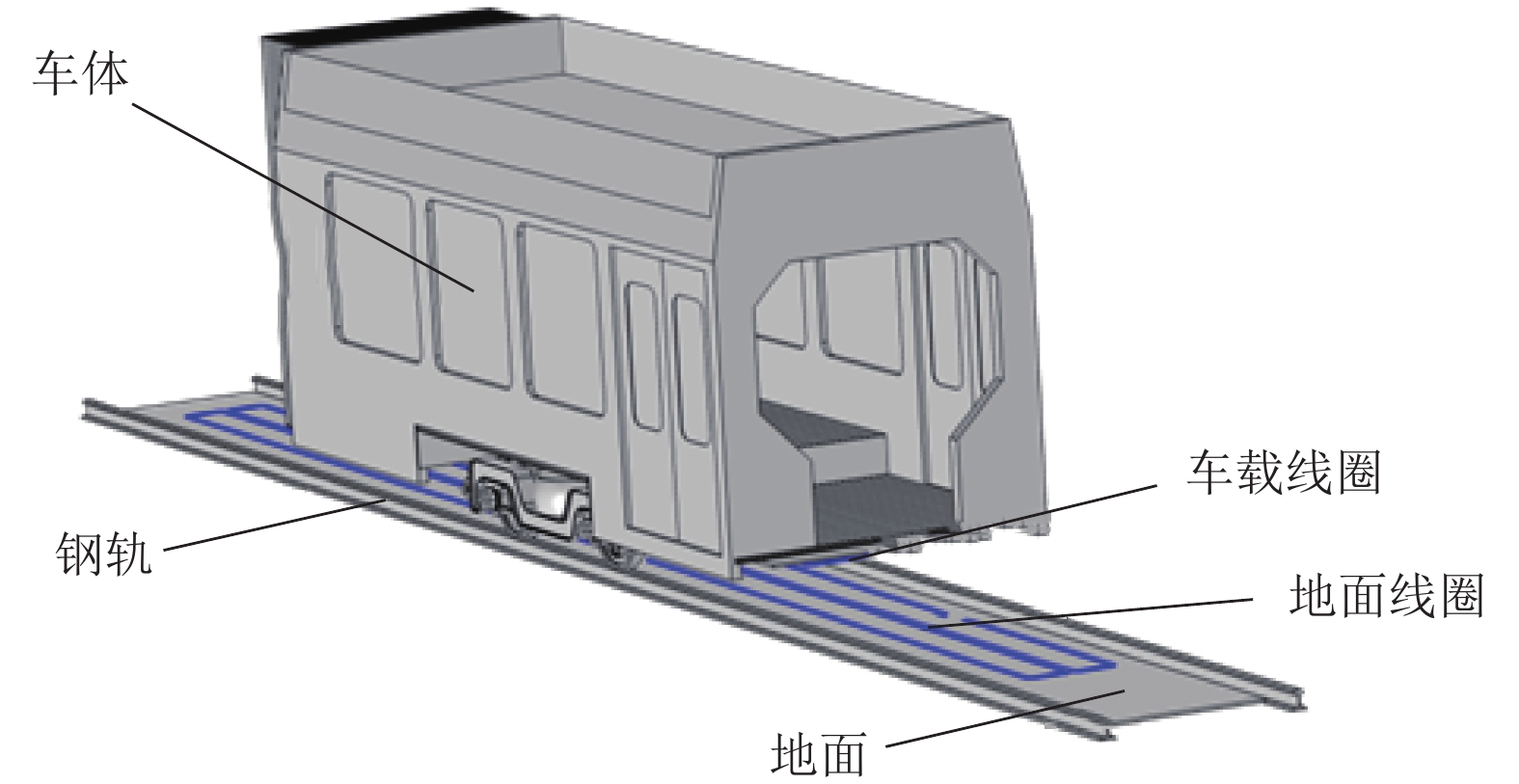
 下载:
下载:
